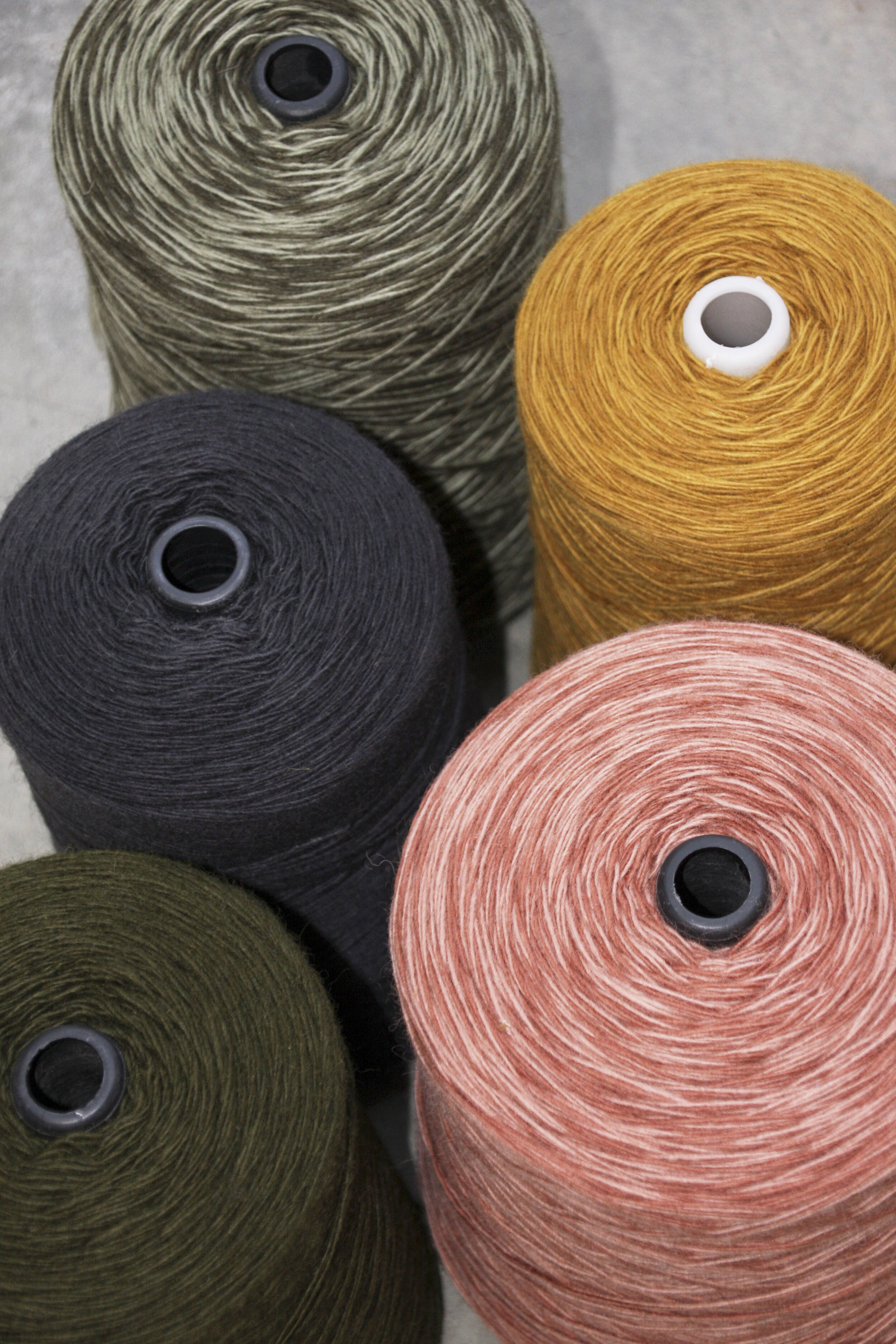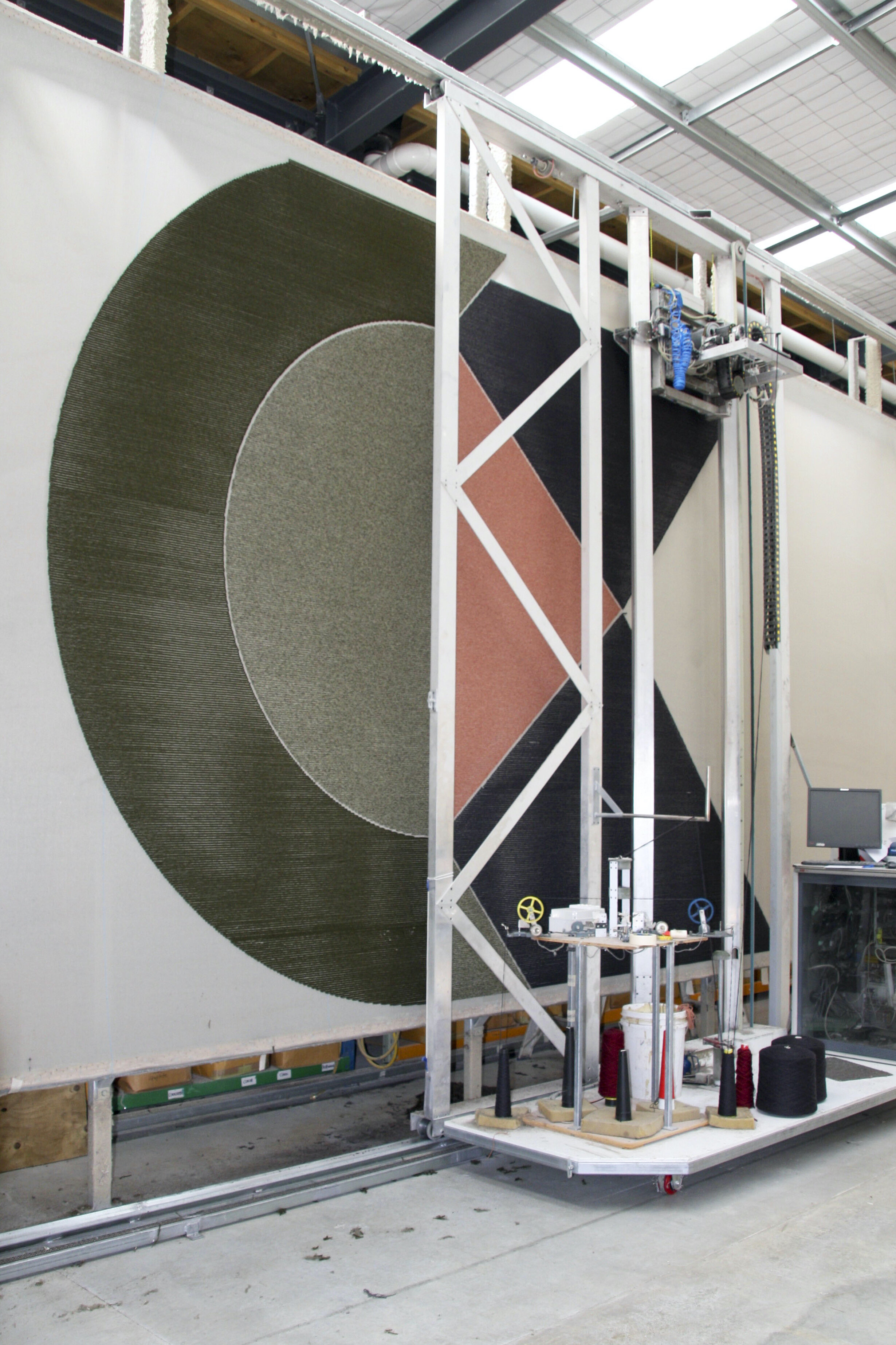One of CRONZ’s tufting machines, built in-house.
John and Helen Wyma, founders of CRONZ.
About CRONZ
It is a typical New Zealand story. Since New Zealand is a country at the end of the world, we have to be inventive to conquer the challenges we face in this isolated paradise. Throughout our brief history, many Kiwis have asked themselves: how could I make this work? Isn’t there a better way to do this - which is where the ‘shed’ comes into it: a place of great inventions and ideas.
It all started with an idea back in 2002 - having sold an engineering company, John Wyma, a founder and director of CRONZ, was looking for a new challenge to apply his engineering brain to. Inspired by the need for New Zealand to add value to raw material and being located in the rich location of Canterbury, John set about designing then building a machine to manipulate yarn into high quality floor coverings. Because tufting is historically done by hand, it is a very labour intensive, costly process, and it is often connected to unethical work conditions. John wanted the same result as a hand tuft look, but in an economical and ethical way, combining the infinite versatility and flexibility of the handmade with the quality and consistency that comes from mechanical control. Various generations of the initial design concept later, the tufting machine can now tuft in multiple directions, carry various colours simultaneously and produce a controlled design down to the millimetre.
New Zealand, our home
New Zealand is a land last discovered, least affected. It is a country roughly the size of Germany, with a population of just over 4 million, an average European city. We have lots of beaches. And we have lots and lots of sheep. There were no natural enemies for birds here, so some of our birds had forgotten how to fly. Fair enough! New Zealand is long and skinny, thus making its way through a variety of climate zones and landscapes displaying huge variety. From the subtropical Bays in the north to the dramatic Alps in the south which meet the sea with dramatic coastal frontage. From the green hills to the dense rainforest, we are blessed to have such variety in a country with a population that is mostly spread out to allow creativity to blossom. We are an intellectual bunch, a creative bunch. We are deep thinkers as well as fun loving creatures. We like finding solutions for challenges, not being defeated by our global position and our isolation. We are tough on ourselves, always striving for more. While this creates the best rugby team in the world, it also allows for developing machinery and equipment for industry at a surprisingly sophisticated level on a shoestring budget. And we are proud of that. Have we inspired you enough to visit? If so, pop in and see us at our Christchurch showroom. We can have a cuppa and learn the way of your world.
Back of each rug is finished with cotton or jute tape and in the colour suitable for the rug.
Shearing removes longer threads and achieves even and smooth finish.
The manufacturing process
Our process of making custom rugs and carpets starts with the wool yarn supply. Read more
The next step is the dyeing. The wool is dyed in smaller batches after spinning or felting, so hank-dyed. Hank-dyeing in smaller batches provides us with the ability to incorporate a variety of colours, some of them specifically developed for a client, into one project. The wool is dyed in large vats at around 90 degrees Celsia. The amount of dye required is worked out in the lab on a small sample before the main dyeing starts, so colour accuracy is attained for the larger amount of wool. After we receive the dyed wool from the dyers, we wind it onto cones and are ready to tuft.
The design is developed and generated on a computer. This creates output and instructions for our machines to follow. All the tufting machines were designed and built by us from the ground up, including all the mechanical & electrical parts, and much of the programming. Tufting is normally done by hand with a help of a tufting gun, positioning it in the desired direction onto a cloth backing, and inserting stitches through. Our machines do just that but in a more efficient manner, requiring only one machine operator. This enables us to tuft a variety of textures and patterns.
After tufting, the secondary backing is applied and secured using latex. The latex coating ensures the yarn stays true to the form and design and it provides a long lasting result for the endurance of your rug or carpet. This is followed by hand-finishing and edging.
We use the ‘rolled edge’ binding technique to finish off each rug. This means the secondary backing is folded over at the back and secured using latex and glue. The tape is then also applied - made of cotton or jute (see image on the left). After a few weeks, sometimes sooner, the rug relaxes and the binding/edge becomes invisible.
Most rugs and carpets also require hand-shearing. This process removes the slightly longer yarn in certain areas, and gives a divine, smooth velvety finish where the pile height is all the same length.
The final step is packaging and the finished product is ready to be sent to the client.
Our design & pattern capabilities
The CNC machinery at CRONZ is very versatile and can produce a wide variety of pattern, from simple straight lines to complex curved shapes and coloured areas. It is consistent and accurate to original drawings created on the computer. The designed areas / lines are created in a vector software and from these a computer driven path is generated for the tufting machine to follow. The colours are tufted by the machine one area at a time.
The scale of the pattern or design can easily be altered to suit the size of the rug or carpet. The limiting factor is the movement in the backing during the tufting process. As the backing is stretched tightly on the frame, some movement occurs when the yarn is tufted into the backing due to the extra tension created by forcing the yarn into the fabric. When the areas to be tufted are smaller than 8 mm in any direction, overtufting can occur around the edges of the pattern, which creates broken lines and poor definition between colours. This can be limited by creating wider gaps between colours, that can be hand-tufted in at the finishing stages. This process does however add extra time to the process and results in an increased cost.
Overall the pattern detail with our tufting system cannot be as fine as hand-knotted or woven products.













